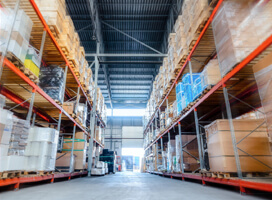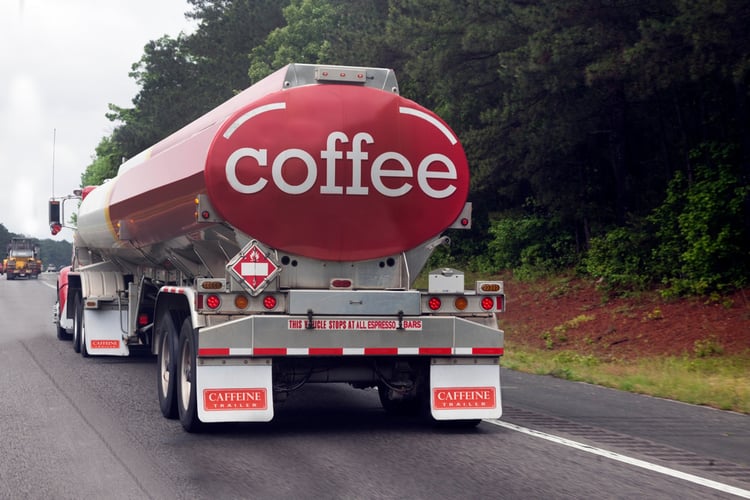
There’s nothing quite like that first sip of coffee in the morning. From cabinet to brewer to your favorite mug, it’s easy to achieve the perfect cup. But how did the coffee get from tree to truck to grocer? Here’s the intriguing supply chain journey of coffee.
How the Coffee Supply Chain Works
A supply chain represents the various processes and touchpoints it takes to get a product into the hands of consumers. Here is how the coffee supply chain works from start to finish.
Coffee Supply Chain Participants
From shrub to mug, coffee beans pass through a lot of hands before they reach the consumer. Here is a breakdown of the various participants in the coffee supply chain:
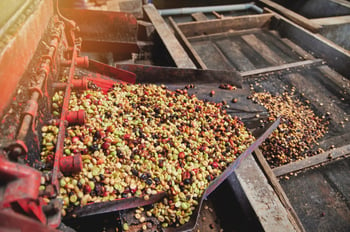
- Growers — Coffee bean growers are often small-scale farmers with 2-5 acre operations. Many of these farmers will harvest and do some preliminary processing, such as drying and hulling the beans.
- Processors — Processors can be growers or separate entities with the right equipment to transform harvested cherries into dried coffee beans. Once the beans are dried, they are placed into large sacks for distribution.
- Intermediaries — Various intermediaries will be involved in different states of the production process. From buying to processing to transporting to selling, these businesses can have several links in the supply chain.
- Government agencies — Government agencies also get involved in the coffee supply chain because it’s a product that is typically imported from other countries, like Columbia and Brazil.
- Exporters/Importers — Exporters are in the business of connecting with people in other countries (importers) to move the products across the border.
- Roasters — Roasters transform green coffee beans into the brown ones that are ready for brewing.
- Retailers — Retailers can range from your local grocery store to the corner coffee shop that sells coffee by the cup.
The Coffee Supply Chain Process
Coffee beans go through a complex journey before they reach the consumer’s cup. Here is an outline of the process:

- Growing — Coffee plants can take anywhere from 4-7 years to produce their initial harvest, and will continue producing for about 25 years.
- Harvesting — Coffee plants produce a berry, which looks like a cherry. These can be harvested by hand or machine, and each berry contains two coffee beans.
- Processing — Through processing, the outer casing of the fruit is removed to reveal the green coffee beans inside.
- Milling — Once the beans are processed, they are hulled, cleaned, sorted, and sometimes graded.
- Roasting — The green coffee beans must be roasted to get their unique flavor, which might be rich, dark, light, or some other unique variety of coffee roast.
- Packaging — The beans are inspected for quality and then packaged for shipping or sale.
- Shipping — Roasted beans are shipped in a variety of forms, both domestically and internationally. Bulk shipments go to coffee shops and many resellers.
- Grinding — Grinding can be done by the consumer or seller. This process makes the beans ready for brewing.
- Brewing — The consumer or seller brews the ground coffee, making it ready to drink.
Challenges in the Coffee Supply Chain
The logistics in the international coffee industry have always been tough to decipher. But, over the past several years, some of the challenges facing this sector have increased dramatically. In addition to the restrictions created by the pandemic, shipping prices have increased, and there is a shortage of workers at various essential stages. This has led to delayed shipments and rising costs for participants throughout this industry — from farmers to roasters and more.
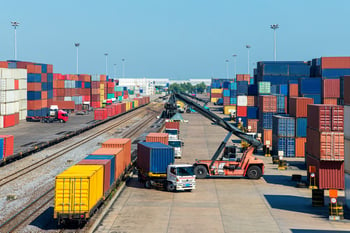 Over the past several decades, retailers and consumers could expect a shipment to arrive at a certain time, and it would. But the pandemic drastically disrupted this precarious system in several ways. First, people began hoarding goods, like coffee, at the beginning of the crisis, causing sales ratios and inventory levels to become skewed. Certain industries have struggled to keep up with normalized demand due to inefficiency in the supply chain.
Over the past several decades, retailers and consumers could expect a shipment to arrive at a certain time, and it would. But the pandemic drastically disrupted this precarious system in several ways. First, people began hoarding goods, like coffee, at the beginning of the crisis, causing sales ratios and inventory levels to become skewed. Certain industries have struggled to keep up with normalized demand due to inefficiency in the supply chain.
Many shipping containers are still falling behind in their journey, meaning they aren’t available for fresh shipments of coffee beans when they should be. These are heavy commodities that aren’t as attractive to some shippers. That said, these logistics require a more deliberate and unified approach by all players in the process.
Injecting More Visibility Into the Coffee Supply Chain
No one wants to drink bad coffee. Unfortunately, delays in coffee processing and shipments mean beans can get damaged, impacting the customer experience and the industry as a whole. One of the best ways to address these challenges is by injecting more visibility into the coffee supply chain. Specifically, many supply chain participants are using data-driven optimization strategies to help reduce or eliminate risks and improve overall efficiency.
For example, RFID tags are sensors that can be used from seed to store. They can record a variety of information like the date of harvest, location, and even temperature and humidity levels in a container. Using sensors, coffee supply chain participants can see if shipments are stuck on a loading dock or delayed in processing.
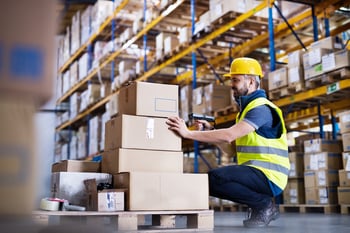 These tools provide real-time information that processors, warehouses, and retailers can use to make more informed business decisions. They can also use the sensors to optimize workflows, such as inventory control and import/export processes. Finally, the data provided by this elevated visibility can help businesses reduce costs and become more sustainable.
These tools provide real-time information that processors, warehouses, and retailers can use to make more informed business decisions. They can also use the sensors to optimize workflows, such as inventory control and import/export processes. Finally, the data provided by this elevated visibility can help businesses reduce costs and become more sustainable.
The supply chain for coffee is a lengthy and complex process. In the past, it involved a lot of unknowns and potential risks. These have produced challenges that impact the overall customer experience. By improving visibility throughout the coffee supply chain, participants can increase quality, reduce errors, boost efficiency, and improve overall results.


